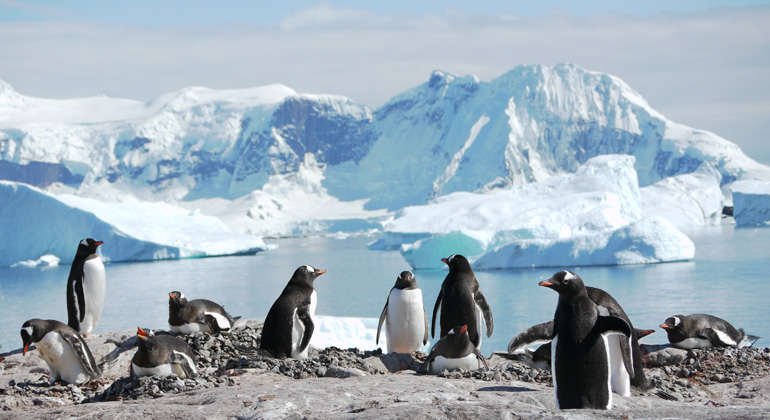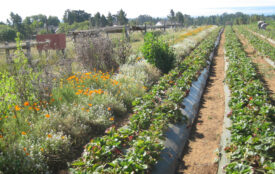Informing the next generation of biodiversity goals
According to an international team of researchers, a ‘safety net’ made up of multiple, interlinked and ambitious goals is needed to tackle nature’s alarming decline.
The scientific advice comes at a critical time: The Convention on Biological Diversity (CBD) recently announced that none of its 20 Aichi Biodiversity Targets for 2020 has been reached. Policymakers, scientists, and country negotiators are now preparing for the next generation of biodiversity goals for 2030 and 2050 to be enshrined by the 15th Convention of the Parties in 2021.
The new paper, published in the journal Science outlines the scientific basis for redesigning this new set of biodiversity goals. To reach the road to recovery, ecosystems, species, genetic diversity, and nature’s contributions to people all need distinct goals, which need to be woven together into a safety net and set at a high level of ambition.
The text of the CBD’s document on new goals for biodiversity is in flux; countries, organizations, and interest groups have put forward proposals for particular facets of nature, such as species, natural ecosystems or genetic diversity. The authors, comprising a group of more than 60 leading biodiversity experts from 26 countries, assessed these draft goals and asked what the scientific evidence supporting them is, how these goals reinforce or undermine each other, and whether one aspect of nature could serve as a shortcut for others. The result is an independent, scientifically grounded, unprecedentedly comprehensive assessment.
“We hope this is a useful tool in the CBD negotiations on a new strategy for nature and people,” says study lead author Sandra Díaz, a senior researcher at the National Research Council (CONICET), and professor at the National University of Córdoba, Argentina.
According to the scientists, three points are critical for nations to take into account when setting the new biodiversity goals:
Firstly, a single goal for nature based on a single facet, for example, focused only on species extinctions, or ecosystem area, similar to the ”below 2°C” target for climate, is risky. Multiple distinct goals are needed for ecosystems, species, and nature’s contributions to people to make sure none of them falls through the gaps. Although having one target based solely on ecosystems, species, or nature’s contributions to people as a shortcut for the whole of nature might be tempting, the balance of published evidence is against it. Buttressing the shared vision of the CBD (‘living in harmony with nature”) by multiple goals, each corresponding to a major facet of nature, is much safer.
Secondly, as the facets of nature are interlinked and affect each other for better or worse, the goals must be defined and delivered holistically, rather than in isolation.
Thirdly, only the highest level of ambition for setting each goal, and implementing all goals in an integrated manner, will give a realistic chance of “bending the curve” of nature’s decline by 2050. It will not be enough to have, for example, an ambitious goal for reducing species extinctions if goals for ecosystems and genetic diversity are not sufficiently ambitious. The paper concludes that unless the different facets are contemplated together, and unless the ambitions are set very high for each of them, there is very little chance to transition to a better and fairer future for all life on Earth by 2050.
The authors note that they have explicitly focused on the biological aspects. They have not evaluated the economic or political consequences of the goals but highlight that not considering social and political issues when implementing actions would be a recipe for failure.
“Building a sufficiently ambitious safety net for nature will be a major global challenge, but unless we do it, we are leaving behind huge problems for every future generation,” said Díaz.
To help crystallize these general recommendations, the authors have produced a checklist of key science-based points that negotiators could have handy during the upcoming negotiations of the final text of the new biodiversity goals.
“Countries have set international biodiversity goals multiple times in the past and have repeatedly missed them. Political will, competing interests, and other implementation challenges have had a major role to play in these past failures. However, imperfect targets and indicators, as well as insufficient guidance for national implementation of global strategies, were also important factors. Our work is a timely contribution to ensure that strategic goals and associated targets and indicators indicate the road that governments, the private sector, and civil society have to take to put nature on a path of recovery,” concludes IIASA researcher and study coauthor Piero Visconti.
Adapted from a press release prepared by the Earth Commission.
- Díaz S, Zafra-Calvo N, Purvis A, Verburg PH, Obura D, Leadley P, Chaplin-Kramer R, De Meester L, Dulloo E, Martín-López B, Shaw MB, Visconti P, et al. (2020). Set ambitious goals for biodiversity and sustainability: Coordinated goals and holistic actions are critical. Science DOI: 10.1126/science.abe1530
Source
International Institute for Applied Systems Analysis (IIASA) 2020








